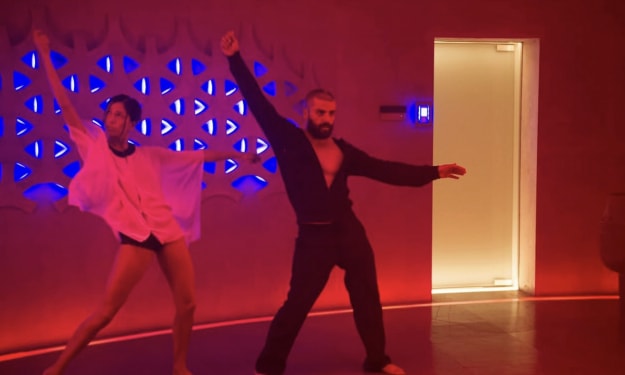Why The Sequel Trilogy Is More Cohesive Than People Think
An Evaluation

With the sequel trilogy over and complete, many have argued that it is a trilogy that is inconsistent, non-cohesive, and disjointed, along with whole bunch of other critiques as well. Perhaps the critics are being too harsh. Perhaps they are looking at things a bit differently than how they should. Yes, having three, then eventually two, different directors had an effect on the making of the trilogy. Yes, things like the loss of Carrie Fisher affected the plot and some threads getting set aside. On the other hand, it may not be as bad as many of its critics point out. If one looks closer between the lines, and examine the major characters and their thematic elements, they would see a trilogy whose arcs and threads are actually really tight and come to both natural and fair conclusions.
Plot vs Theme
First off, we should look at what cohesion means and the various types of cohesion. In terms of the actual plot, Star Wars had never fared well in having cohesive plot structure. From the original trilogy to the prequel trilogy, the plots of Star Wars had been wacky at best, and bizarre at most. Certain threads that started in one movie did not end in the next. For example Boba Fett was introduced as a boy in Attack of the Clones, and yet his story is never picked up again in Revenge of the Sith. While that this particular plot point was carried on, other more important threads were tied up, such as Anakin journey to the Dark Side, his romance with Padme, and the fall of the Republic.
RELATED: This Prequel Trilogy Fan Theory Predicted Snoke's Backstory
Some might argue that having a cohesive plot with build up and resolution is crucial to success in a serialized story like Star Wars. However, I think that is just a very simple reading of film and storytelling. Sometimes, characters would pop up, play a role, and then never appear again. Even if Attack of the Clones had shown the origin of Boba Fett, did it really matter that Revenge of the Sith followed through with it since that film's most important aspect was the downfall of Anakin.
It was no different really with the sequel trilogy. While some may scratch their head at the plot, the overall themes of a new generation of heroes taking up the mantle from their predecessors, and dealing with identity was clearly presented throughout all three films.
Rey Who?

Rey was a scavenger. Rey was a nobody. Rey was a Palpatine, In the end, Rey chose to be a Skywalker.
Much of the sequel trilogy revolved around Rey’s identity, who she was, and what was her purpose. Someone was always trying to impose an identity on Rey, mainly Kylo Ren, her rival on the opposite side of the Force, as well as Snoke and later Palpatine. On the contrary, the heroes would tell Rey not to fear who she was, and that embracing herself was the most important thing she could do. She should decide her own fate, and most importantly, her own identity.
In The Force Awakens the villains gave her the identity of the scavenger, in The Last Jedi they imposed the identity of a nobody, and in The Rise of Skywalker they made her a Palpatine. While many wanted Rey to remain a nobody in terms of not being related to anyone by blood, the idea of her being a Palpatine did not necessarily negate the idea that Rey has a defined identity. When Kylo tells Rey she was a Palpatine, he was now once again trying to impose a different identity on her. First, he told her that she was nobody because he knew it would hurt her as it was the worst thing she could hear, that she really was disconnected to the story around her. Once she discovered that she was connected to the story after all, she realized it was in the worst way possible, being the descendant of the most vile man in the galaxy.
In the end, Rey rejected all those identities of scavenger, nobody, and Palpatine. With the blessing of the two Force ghosts who guided her on the path of the Jedi, she took up the identity of Skywalker. While not related by blood, she would represent all the good that they have brought to the galaxy and more. That was the identity she had chosen for herself. That was her character arc. The name and identity of Skywalker was hers.
Heir Of Darkness Or Light?

Ben Solo aka. Kylo Ren’s arc was probably the strongest one of all the sequel characters by far. As a child and young adult, he struggled with the identity of being related to the greatest heroes and villains of the galaxy. He was the nephew of Luke, son of Han and Leia, and the grandson of Darth Vader. He never felt that he had an identity of his own, and each time he chose a path it just caused him to get more angry and more frustrated. Essentially Ben’s story was one of getting over his own self-loathing and coming to terms with himself and his own inner light and darkness.
Many say that the destruction and reparing of the mask were signs of Kylo Ren relapsing back to the Dark Side, but I disagree. The only reason he destroyed the mask in the first place was to gain the approval of his master Snoke. He never did it just for himself. In the Rise of Skywalker Novelization, Kylo rebuilt the mask in order to hide himself again when trying to turn Rey to darkness or kill her, fearing that he might not have the strength to do it otherwise. Kylo Ren was not a character who progressed so much and then backslid after thinking that he had found salvation.
In short, he was a character who was never happy.
When he killed his father, he thought he finally was able to snuff out the light within him. Instead, he discovered that his soul had been split in two as he wavered between light and darkness. When he killed Snoke, he thought he was finally at the top of it all, only to realize that he was still miserable, and worse, he was tricked by Emperor Palpatine himself. Throughout it all, he still saw himself as the monster, and the heir of darkness. When he told Rey that he could never go back home that was when he resigned himself to the fact that he could never return to the light.
That was until Leia called out to him one last time right as Rey healed him.
When he saw Rey's compassion, he realized that it was worth listening to the light calling to him. When he faced the memory of his father one more time, he chose to embrace him instead of killing him. Yes, the plot was a little convoluted, but the character cohesion was there.
Pilot To General

Finally a third character who has a pretty cohesive character arc is Poe Dameron.
Poe’s arc actually started in The Last Jedi due to his limited screen time in The Force Awakens. Here, we saw an arrogant pilot who had just destroyed the First Order's main superweapon, Starkiller Base. Throughout The Last Jedi he would think that he was such a hotshot, that he started to question his superior officers, and got his teammates in trouble.
In The Rise of Skywalker while Poe's brash arrogance was still there, we saw him taking the mission a lot more seriously than before. He understood their current conundrum, and that if that if they did not defeat Palpatine and the Final Order, then all the gains they had worked so hard for would all be for naught. He came to this realization especially when Leia passed away and he and Finn were now the two new leaders of the Resistance movement. He knew that despite the odds stacked against them, they needed to make a final stand. Otherwise, the galaxy would be doomed to failure. He was no longer the arrogant pilot who jumped into action without thinking of consequences. He was now someone humbled by the gravity of the situation at hand who rose up to the occasion to do what had to be done. Yes there were some negative plot points like Poe being a spice runner. Overall, Poe's character arc remained quite cohesive when we step back and look at the broader narrative.
Despite the great character development mentioned above, sadly there were two characters that did not manage live up to expectation.
The Incoherent Arcs

Nothing is perfect, and while this article is arguing for the cohesion of the sequel trilogy, there were some characters that deserved better narratives. Finn and Rose represent the two threads that sadly did not make it to the finish line.
Although Finn was prominent in all three films, his character development was severely undercut by the time Rise of Skywalker came along. His connection to the First Order and his being kidnapped as a child and conscripted into the First Order as a stormtrooper did not have much of an impact on the trilogy's narrative as much as many would have hoped. Other than his encounter with Jannah and how her crew of stormtroopers refused to fire on innocent civilians and deserted instead, we did not really see Finn's story as a stormtrooper being discussed in depth.
While the films did not necessarily promise a stormtrooper uprising, Finn and his connection to the First Order stormtroopers would have been interesting to see as we follow his journey from First Order deserter to Resistance hero. Even the attempt to make him Force sensitive did not go as far enough as many would have hoped.
Of course, there was Rose. She was supposed to be the voice for the common people and how the war affect them. Unfortunately, her storyline did not make it very far in the films.
Plot Is Not The End All Be All
Is plot the most important thing in a story? No, it is not, at least not to some. For the most part, plot is just actions a character takes to get from point A to point B. It is how the characters react, the lessons they learn, the messages that are conveyed. Even the retcons are not really disjointed so much as they just change one’s perspective of what had happened before. They do not necessarily erase what had been established previously. Rise of Skywalker explained that Rey and Ben are a dyad in the Force, hence their unique connection. That does not change the fact that they were connected in The Last Jedi or even The Force Awakens. It just gives us the full explanation of what was happening in the first place.
Sure, it would be nice to have a plot point seeded, and then have it pay off, be it Palpatine's return or a stormtrooper rebellion. Again, the plot is not everything. Sometimes, the plot can play into the character journey, and other times not so much. As there is no one way to tell a story, there is no one way to judge a story.
That is the beauty of art, and the beauty of Star Wars.
READ NEXT: How The Battle Of Endor Is Different From The Battle Of Exegol
Written By Joel Davis
Syndicated From Culture Slate






Comments
There are no comments for this story
Be the first to respond and start the conversation.